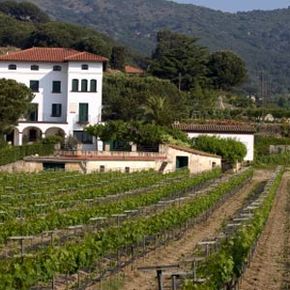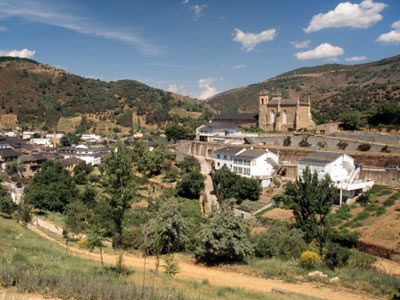Spain is a beautiful land filled with history, art and culture. It's also filled with wonderful wine. The Penedés region in the Catalonian countryside west of Barcelona is second only to La Rioja in the worldwide popularity of its wines. Its primary product is Cava, or sparkling wine made in the traditional method of "real Champagne" in Champagne, France. The Freixenet and Cordoníu wineries, both located in the medieval hillside town of Sant Sadurní d'Anoia, dominate Spain's market for sparkling wine. This town alone produces 90 percent of the Cava bottled in Spain [source: Amat i Solé].
Most of the winemaking enterprises in the region, however, are small family operations. Many of them oversee every aspect of the winemaking process themselves, from tending the vines to bottling. The area also produces still red and white wines of sufficient distinction to merit a Denomination of Origin (DO) from the government.
Advertisement
Geographically, Penedés is divided into three zones. These different areas provide a variety of microclimates for wine growing. Along the coastline, Bajo Penedés is the lowest in altitude and warmest in temperature. Low hills divide the middle region, Medio Penedés, from the Mediterranean coast. As the most productive area of Penedés, the middle zone accounts for the majority of wine grapes harvested, which are mostly native white wine varietals [source: CIV]. The Alt Penedés vineyards possess the region's greatest reputation for quality [source: Cellar Tours]. These vineyards are at the highest elevation of any in Europe at 2,600 feet (800 meters) [source: Spanish Fiestas].
Penedés enjoys a lively tourist trade for multiple reasons. Its landscape in the shadow of the Montserrat Mountains and mild climate represent the best of the Mediterranean. Its proximity to Barcelona, one of Europe's top destinations, makes it a convenient choice for scenic or wine-related day trips.
In this article, you'll learn the culture and history of the Penedés wine region. Then you'll discover the region's agriculture and its fine Spanish wines. Read on to learn about the history of Penedés.
Advertisement

